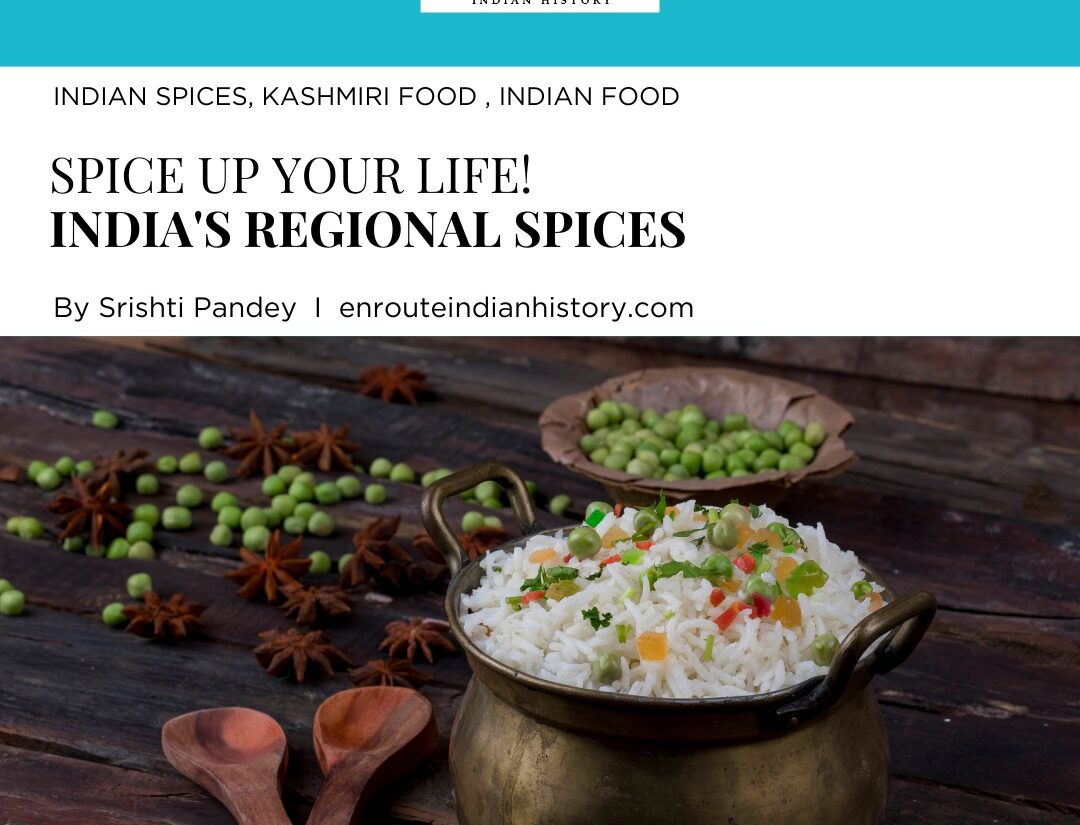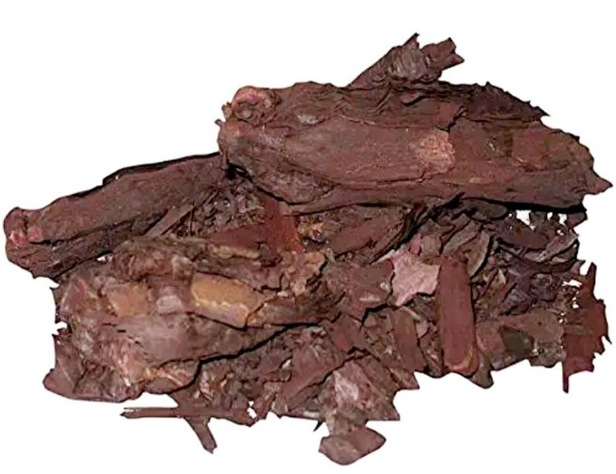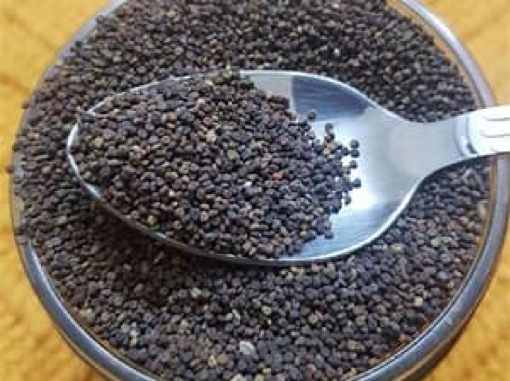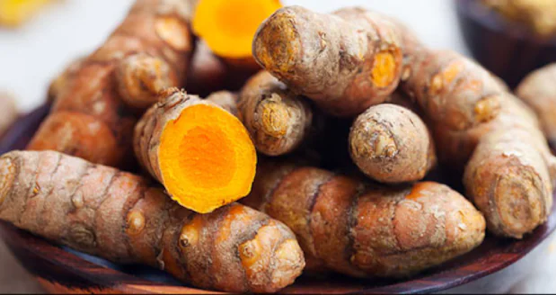
India has a rich cultural tradition of having food with the family and guests. The food is served to the family and guests with a lot of love. It is ensured that the food cooked at home is full of flavour and Indian spices. Indian food has been enriched with Indian spices since the beginning of the Vedic period and one finds a mention of spices such as Cardamom. Black pepper etc. In contemporary times our Masal Dani (box of spices) has an array of taste, flavour, texture and colour which get transferred from the box to the pan each time the food is cooked.
The history of spices in India can be traced back to the Vedic times. From the Vedic times, one can find a mention of spices in all four Vedas (Rig Veda, Yajur Veda, Sama Veda and Athar Veda. As a spice black pepper finds a place in the Yajur Veda. This is the instrumental reason why even India today accounts for more than 40% of the spice trade in the world.
The Indian spices play an important role in healing and they help in recovering from ailments and diseases. Indian Spices and regional spices have been integral in the practice of Ayurveda and today India has achieved the position of being a hub in the global spice trade. Some of the popular spices that are used in our homes are Dhania (Coriander), Haldi (Turmeric), Lal Mirch (Red Chilly), and Kali Mirch (Black Pepper) amongst others. Then there are pre-mixed masalas (these are the masalas that are prepared by mixing a few spices to achieve a concoction of spices and the prominent ones amongst these are the Chana Masala, Pav-Bhaji Masala, Sambar Masala etc.
While we are aware of these masalas there are some Indian spices or masalas which are the king and queen of kitchens in the various regions of India. They are sometimes restricted to within the geographical boundaries of a state and sometimes they emerge as a new star in the Indian cooking space. This article is an attempt at glorifying the regional Indian spices, the stars in their region and they wear the crown for being an all-rounder kitchen spice champion of regional Indian cuisines. This is a dedication to those culinary master spices without which the regional cuisines have a fear of losing their taste.
RATANJOT (KASHMIR)
From the exotic land of exotic mountains and natural beauty comes a herb that is used as a spice. This is Ratanjot and is also known as ‘Alkanet Root’ and it is used to add colour and flavour to the food. What is interesting is that the elderly women in the families might have heard of this spice but for the younger generation, this is a fresh substitute for Kashmiri Lal Mirch or Kashmiri Red Chilli.

Exhibit-1: Ratanjot Spice
The Ratnjot plant has roots that are dark reddish brown while the flowers of this plant are blue. The most useful part of this plant is the root. In the times of artificial food colour, this provides a natural red colour to the cuisine in Kashmir. An interesting and important fact about the root is that it does not dissolve in water. It only dissolves in oil, ether or alcohol. When someone wishes to use this spice this person is expected to follow the procedure of frying about a teaspoon of Ratanjot in 2-3 tablespoons of ghee. Ghee provides the best aromatic experience while frying the Ratanjot spice. The liquid should then be strained to separate the root from the liquid. Adding this Indian spice to the curries gives the curries a beautiful red flaming colour and at the same time what is interesting is that the curries do not become very hot and spicy.
In English, it is referred to as Physic nut and there are many ways in which one can make use of this spice at home and in the kitchen. It can be used as a powder, as Ratanjot oil, and even as Ratanjot masala.
There are numerous health benefits associated with this Indian spice. It is beneficial for the skin as it reduces inflammation and clears the skin. It also helps in healing burn scars (the anti-inflammatory properties draw the heat away from the skin and this helps in cooling the skin). It even helps in keeping the heart and the immune system healthy. The chemicals in the spice help in flushing the toxic substances from the bloodstream. The application of Ratanjot oil on the forehead and around the nose provides a person with a soothing effect thereby making the person feel calmer. This also improves the quality of sleep and helps in fighting insomnia. During fever, the use of this Indian spice makes a person sweat thereby bringing down the fever. The hair also benefits from the natural colour which Ratanjot provides and it also helps in promoting hair growth. Ratanjot can be procured from most provision stores in the country.
MATHANIA MIRCH (RAJASTHAN)
From the culturally and traditionally rich state of royalty, Rajasthan comes a variety of red chillies that are native to Mathania village, which is about 35 kilometers from Jodhpur, Rajasthan. Interestingly the chilly which India produces on a mass scale is not native to the country. It was the Portuguese who introduced the chillies to India. Ayurveda has mentioned the medicinal properties of black pepper and red chillies have come to provide a similar hot and spicy taste.

Exhibit-2: Mathania Mirch Spice
Rajasthan is the ideal place for the cultivation of the chilly as the weather is dry. The Mathania mirch not only provides a distinct flavour to the regional cuisine of Rajasthan, it also enhances the colour of the food. These are the chillies that provide Ker Sangri (the signature dish from Rajasthan) with its distinct flavour. Chillies were introduced in Rajasthan around the late 18th or early 19th century and have been cultivated by 7-8 generations by now. In the words of a young chilly trader from Mathania, these chillies are fruits. The chilly pods contain the seeds.
The chillies are cultivated during the winter season. They develop for the first time during December and grow till February. The temperature and the soil provide the chillies with their distinct flavour. These Mathania chillies had been distributed amongst the traders when the ruler of Marwar had won them in a conquest. These chillies which are today facing the threat of extinction because of the changing climatic conditions, have been called the sweetest and the reddest chillies used in cooking by the famous Chef. Ranveer Brar. He had been introduced to these chillies by Mr. Mot Singh who was a cook for the royal family of Jodhpur.
There are health benefits also associated with these chillies. These are high in Vitamin C (seven times more than an orange) and their consumption also provides relief from sinus congestion, helps in relieving migraine pain, and it also helps in curing muscle and joint pains.
JAKHIYA (UTTRAKHAND)
Also spelled as Jhakiya and Jhakya, this spice is the star of the regional cuisine from Garhwal. It is also known as wild mustard or dog mustard. The seeds of this spice are a weed and fall in the category of a herb. They are small, dark and the colour is dark brown or black. The seeds are smaller than mustard seeds and sesame seeds.

Exhibit-3: Jakhiya Spice
This spice provides Garhwali cuisine with a distinct punch. The aroma of the seeds is nutty and it adds a unique flavour to the dishes. Also known as the Himalayan Jakhiya these are used for tempering all the cuisine from the Pahadi region. The spice seeds are crackled in a spoon or two (depending on the need). The spice tastes best with potatoes and a popular dish is known as ‘Jakhiya Aloo’. The flavour has been described as being warm and sweet. It is also used as a substitute for jeera. The Garhwali people prefer this over jeera owing to its crunchy taste and the leaves of the herb are also used as a substitute for green vegetables. These are cultivated in the high forests of the Munsiyari Himalayas. The treatise on Indian medicinal plants was previously published by the Council of Scientific and Industrial Research in 1991, the plant is used for the treatment of fever, liver ailments, inflammation, diarrhoea and bronchitis.
LAKADONG TURMERIC (HALDI) (MEGHALAYA)
Over the years turmeric as an Indian spice has become one of the most important spices in our country. From being used as an essential spice in our masaldani (spice-box), to being used for its healing power to even being used in wedding celebrations (the haldi ceremony) it has an auspiciousness attached to it. Even while celebrating Basant Panchmi, it provides the classic yellow colour to our food.
This variety of Turmeric is grown on the Jaintia hills of Meghalaya. Grown in the village of Lakadong and its neighbouring villages, this turmeric has the highest curcumin content at 7%. Turmeric is grown in the west Jaintia hills of Meghalaya in the districts of Lachain, Lasyein and Lakadong. The varieties from the other two districts have a curcumin content of 4-5% while the one grown in Lakadong has a curcumin content of 7%. The curcumin content provides the haldi with a distinct yellow colour and taste. Compared to this the other varieties in the county usually have a curcumin content of 2-3%.

Exhibit-4: Lakadong Turmeric Spice
For generations, turmeric has played a role in assisting the recovery of a patient. It is used as a paste or a powder and the use varies from culinary adventures to even skincare. Turmeric also has an anti-inflammatory property and that is precisely why it has been mixed with chuna or (calcium carbonate in the past). It even helped in curing the swelling and repairing the broken bones. This turmeric also helps in easing the symptoms of arthritis and even helps in keeping good heart health. This mixture is also used as a natural vermilion with medicinal value by ladies.
This Lakadong turmeric cannot be cultivated anywhere else and the primary reason is that the soil of the Jaintia hills is most suitable for the growth of this turmeric. This is precisely why the Jaintia hills have been provided with a geographical indication tag to grow this variety of Turmeric having many qualities attached to it.
MARATHI MOGGU (KARNATAKA)
Marathi Moggu or the Kapol Buds is a popular spice that is used in the regional cuisine from south India. It is a must-included spice while making the Karnataka specialty of Bise-Bille-Bath. While cooking this spice to extract the maximum flavour from this spice, it is fried in oil and it helps in releasing its true and full flavour. The flavour is similar to what a combination of mustard and black pepper would taste like.

Exhibit-5: Marathi Moggu Spice
The best description which one can attach to Marathi Moggu is that it is a type of caper and these are the dried buds of the kaph tree or the silk cotton tree. In Kannada it is referred to as Moggu and in Telugu it is known as Mogga, and they signify a bud. The spice is never consumed in a raw form. Compulsorily it is always ground and roasted with other spices when it has to be incorporated as an ingredient in a cuisine. Several curry powders make use of this spice as an ingredient and it also plays a prominent role in Chettinad cuisine. This Indian spice is highly aromatic and it helps in the treatment of diarrhoea and the healing of wounds. Being an antioxidant it even has anti-diabetic qualities. It even helps in asthma conditions.
Spices in India have been an integral part of our culinary and everyday traditions and no meal in our country is complete without the aroma and flavours which get highlighted due to these spices. The regional spices are the stars of the cuisine from the states and without them, the plate of food can never be complete.
REFERENCES
- https://exclusivelane.com/blogs/handmade/a-brief-history-of-indian-spices
- Ratanjot- Health Benefits, Uses and Important Facts, Oct 03, 2022, PotsandPans.in, https://www.potsandpans.in/blogs/articles/ratanjot-health-benefits-uses-and-important-facts
3. Red Hot Chilli Peppers: Mathania Lal Mirch, PRACTICES And RITUALS, 25 March 2021, https://www.sahapedia.org/red-hot-chilli-peppers-mathania-lal-mirch
4. Rifka Verma, The New Gastronome, Chillies, Kings & Meats, The University of Gastronomic Sciences (Pollenzo, Italy), https://thenewgastronome.com/chillies-kings-meats/
5. Different kinds of dried red chillies and their health benefits, Living Beyond, Posted March 10, 2022; https://www.livingbeyond.co.in/different-kinds-of-dried-red-chillies-and-their-health-benefits/
- https://thepaharilife.com/products/jakhiya?_pos=1&_sid=0151c2607&_ss=r
- https://www.thenortheaststore.com/lakadong-turmeric-powder-meghalaya
- https://jivikaorganics.in/products/lakadong-turmeric-by-jivika-naturals
- https://www.deccanherald.com/india/meghalaya/meghalayas-lakadong-turmeric-gets-geographical-indication-tag-2797687
- Mathania Mirch Spice, https://tinyurl.com/ycyrm48f
- Ratanjot Spice, https://tinyurl.com/3kav3emp
- https://organicpositive.in/product/kapok-buds-marathi-moggu
- https://mangalorespice.com/products/kapok-buds-marathi-moggu
- [https://tinyurl.com/bes38few]
- [https://tinyurl.com/476ezdjr]
- [https://tinyurl.com/2s43m6r6]
- May 15, 2024
- 6 Min Read























